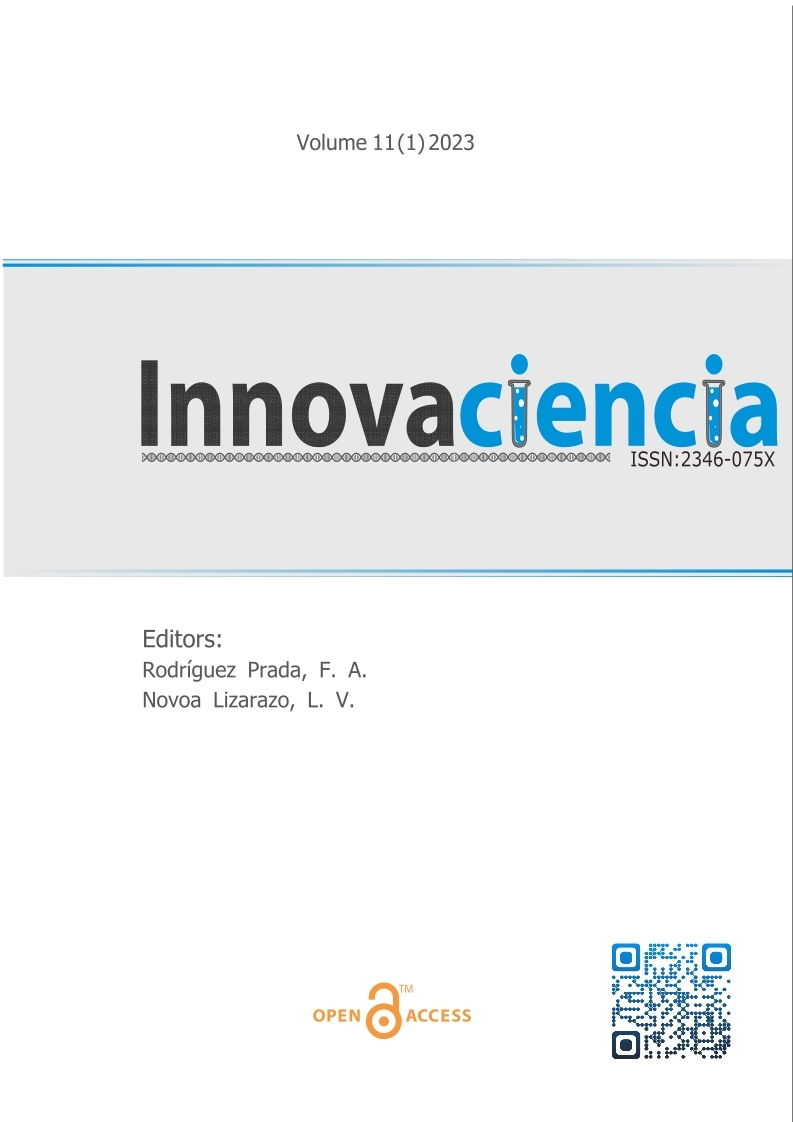Autocuración y curación del cuerpo con la ayuda de conexiones neuronales del cerebro
DOI:
https://doi.org/10.15649/2346075X.3544Palabras clave:
Synapse, Regeneration, Psychoemotional State, PlasticityResumen
Introduction: The need to maintain people’s health and extend the life span of the body stimulates finding new methods of maintaining it. Today, this question is quite important, because the consequences of serious diseases cannot always be corrected, but their formation can be prevented. Therefore, the need to study the issue of self-regeneration of the body is urgent. The purpose of the article is to analyse the main methods and aspects of neuroplasticity support, as well as to highlight the main principles of the formation of new synaptic connections. Materials and Methods: Methods of analysis, generalization, systematization, comparison, and survey were used to determine the features of self-regeneration of the organism through the formation of new neural networks. Results and Discussion: The article analysed ways of forming neural connections that help and methods of improvement. It was determined which factors of the external environment affect the self-recovery process and how to ensure the reduction of the influence of harmful factors. The data obtained during the survey of people were analysed and the main differences in the way of life, as well as its influence on the properties of the brain, were determined. The article identified the most effective methods of self-recovery of the body and the trend of their popularity among the population. The obtained data were compared and the main aspects of the effectiveness of the method of healing the body with the help of neural connections were summarized. During the study, the effectiveness of popular methods of obtaining a positive result of body recovery was analysed. The influence of psycho-emotional factors on the general condition of a person was determined. Conclusions: The results of the study can help psychologists and therapists formulate special programs to avoid brain overload.
Referencias
Madhu S, Sai HN, Peterv V, Cherian J. Self-healing of the body: The three basic key factors of self-healing. Int J Innov Engin Manag Res. 2021. 10(1):222-226. http://dx.doi.org/10.48047/IJIEMR/V10/I01/43
Pei R, Courtney AL, Ferguson I, Brennan C, Zaki J. A neural signature of social support mitigates negative emotion. PsyArXiv. 2023. https://doi.org/10.31234/osf.io/9dapm
Doidge N. The brain’s way of healing: Remarkable discoveries and recoveries from the frontiers of neuroplasticity. New York: Penguin Life; 2015.
Zhao D, Wang D, Wang W, Dai J, Cui M, Wu M, Liu C, Liu J, Meng F, Wang K, Hu F, Liu D, Qiu C, Li W, Li Ch. The altered sensitivity of acute stress induced anxiety-related behaviors by modulating insular cortex-paraventricular thalamus-bed nucleus of the stria terminalis neural circuit. Neurobiol Dis. 2022. 174:105890. https://doi.org/10.1016/j.nbd.2022.105890
Winlow W, Johnson A. Editorial neuronal connectivity and non-classical brain functions. EC Neurology 2023. 15(4):45-47.
Jaime J, Moenter SM. GnRH neuron excitability and action potential properties change with development but are not affected by prenatal androgen exposure. eNeuro 2022. 9(6):ENEURO.0362-22.2022. https://doi.org/10.1523/eneuro.0362-22.2022
Espinosa F, Pop IV, Lai HC. Electrophysiological properties of neurons in the intermediate thoracolumbar spinal cord mediating proprioception. BioRxiv 2022. https://doi.org/10.1101/2022.06.23.497422
Sidorov AV, Shadenko VN. Passive membrane properties and spike characteristics in a pair of identified electrically coupled lymnaea stagnalis neurons under long-term experimental hyperglycemia. J Evol Biochem Physiol. 2023. 59:369-381. https://doi.org/10.1134/S0022093023020060
Bronson D, Kalluri R. Muscarinic acetylcholine receptors modulate HCN channel properties in vestibular ganglion neurons. J Neurosci. 2023. 43(6):902-917. https://doi.org/10.1523/jneurosci.2552-21.2022
Joshua A. Neuroplasticity. In: Physiotherapy for Adult Neurological Conditions. New York: Springer; 2022.
Ugryumov MV. Dopamine synthesis by non-dopaminergic neurons as an effective mechanism of neuroplasticity. Neurochem J. 2018. 12:288-294. https://doi.org/10.1134/S1819712418040086
Hernandez-Morales M, Morales-Weil K, Han SM, Han V, Pegram K, Benner EJ, Kramer RH, Liu C. Controlling the bioelectrical properties of neurons with ferritin-based Magnetogenetics. BioRxiv 2022. https://doi.org/10.1101/2022.12.07.519516
Chambers AR, Aschauer DF, Eppler JB, Kaschube M, Rumpel S. A stable sensory map emerges from a dynamic equilibrium of neurons with unstable tuning properties. Cereb Cortex. 2023. 33(9):5597-5612. https://doi.org/10.1093/cercor/bhac445
Karim AKMR, Proulx MJ, de Sousa AA, Likova LT. Neuroplasticity and crossmodal connectivity in the normal, healthy brain. Psychol Neurosci. 2021. 14(3):298-334. https://doi.org/10.1037%2Fpne0000258
Coombes S, Wedgwood K. Response properties of single neurons. In: Neurodynamics. New York: Springer; 2023.
Ahmed ST, Abidin G, Farooq S, Ejaz R, Baig M. Yoga, meditation, the improvement in neuroplasticity. In: 8th Annual Neuroscience Conference. Karachi: Pakistan Society of Basic & Applied Neuroscience; 2022.
Tian D, Izumi SI. TMS and neocortical neurons – An integrative review on the micro-macro connection in neuroplasticity. Japan J Compr Rehabil Sci. 2023. 14:1-9. https://doi.org/10.11336/jjcrs.14.1
Phillips W. The cooperative neuron: Cellular foundations of mental life. Oxford: Oxford University Press; 2023.
Cabral D, Fried P, Rice J, Rundek T, Pascual-Leone A, Sacco R, Wright C, Gomes-Osman J. Efficacy of mechanisms of neuroplasticity after a stroke. Restor Neurol Neurosci. 2022. 40(2):73-84. https://doi.org/10.3233/rnn-211227
Pravin K. Role of neuroplasticity in neurorehabilitation. In: Proceedings of Indian Association of Physiotherapists Conference. Kolkata: Indian Association of Physiotherapists; 2022.
Descargas
Publicado
Cómo citar
Descargas
Número
Sección
Licencia
Derechos de autor 2023 Innovaciencia

Esta obra está bajo una licencia internacional Creative Commons Atribución-NoComercial 4.0.
Todos los artículos publicados en esta revista científica están protegidos por los derechos de autor. Los autores retienen los derechos de autor y conceden a la revista el derecho de primera publicación con el trabajo simultáneamente licenciado bajo una Licencia Creative Commons Atribución-NoComercial 4.0 Internacional (CC BY-NC 4.0) que permite compartir el trabajo con reconocimiento de autoría y sin fines comerciales.
Los lectores pueden copiar y distribuir el material de este número de la revista para fines no comerciales en cualquier medio, siempre que se cite el trabajo original y se den crédito a los autores y a la revista.
Cualquier uso comercial del material de esta revista está estrictamente prohibido sin el permiso por escrito del titular de los derechos de autor.
Para obtener más información sobre los derechos de autor de la revista y las políticas de acceso abierto, por favor visite nuestro sitio web.
















